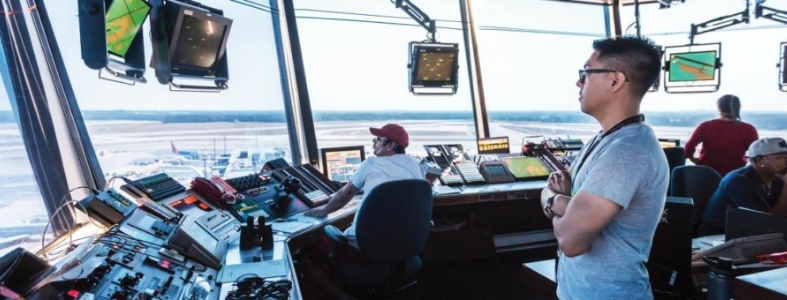
High Stakes, Low Control: Part 2: Fixing the Imbalance — How to Support High-Responsibility Workers Before They Burn Out
High Stakes, Low Control: Part 2: Fixing the Imbalance — How to Support High-Responsibility Workers Before They Burn Out
By James Porter
In Part 1 of this series, we looked at the growing stress crisis among air traffic controllers and explored how stress skyrockets when responsibility is high and control is low — a dynamic that applies far beyond the aviation industry.
Now let’s talk about what can actually be done to fix that imbalance — not just for air traffic controllers, but for anyone working in a high-stakes job with limited influence over outcomes.
1. Start with Systemic Awareness — Stress Is Not a Weakness
The first step is recognition. As I mentioned in Part 1, when I offered my stress management tools to the government agency overseeing air traffic controllers back in the early '80s, the reply was essentially: If we admit stress exists, we lose ground in labor negotiations.
That kind of thinking no longer holds water. Today, we know that chronic stress isn't just a workplace nuisance — it’s a public health threat. It leads to absenteeism, presenteeism, burnout, and even long-term health issues like cardiovascular disease. We need to stop treating stress like a character flaw or a PR liability and start treating it as the structural issue it is.
Admitting a job is stressful isn’t a sign of weakness — it’s a sign of maturity. And it’s the first step toward real change.
2. Design for Control — Give Workers More Autonomy
As we’ve seen, stress thrives in environments where people carry great responsibility but have limited control. One antidote is to design more control into the job itself.
This doesn’t mean giving up safety protocols or ignoring hierarchy — but even in rigid systems, there are often overlooked ways to give workers more say. For example:
- Letting air traffic controllers have more input on their schedules.
- Updating systems to allow for real-time feedback from the field.
- Streamlining communication tools so they feel less like passive observers and more like active collaborators.
Even micro-adjustments in autonomy — like allowing someone to suggest improvements to their workflow — can have a measurable impact on perceived control and lower stress.
3. Invest in Stress Management Training (Yes, Really)
This one might sound self-serving coming from me, but the data backs it up: giving people the tools to understand and regulate their stress makes a difference. Whether it’s mindfulness training, resilience-building workshops, cognitive-behavioral tools, or even something as simple as a short daily debrief session, stress management isn’t just a perk — it’s a protective factor.
Some industries, like healthcare and law enforcement, are beginning to get the message. But air traffic control? Still lagging. With today’s staffing shortages and increased workloads, now is the time to implement robust stress management systems — not after the next burnout-driven resignation wave.
4. Modernize the Tools — Fix the Tech, Not Just the People
You can give workers all the stress management tools in the world, but if the systems they rely on are glitchy, outdated, or unreliable, the stress will keep piling up.
This is especially true in air traffic control, where equipment failures aren’t just annoying — they’re potentially catastrophic. But the lesson applies everywhere: technology that’s hard to use, poorly integrated, or prone to failure erodes control and increases strain. Investing in modern, reliable tools isn’t just a tech issue. It’s a stress-reduction issue.
5. Break the Silence — Make Stress Part of the Conversation
In the same way we now talk openly about diversity, mental health, and work-life balance, we need to normalize discussions about stress — particularly for people in high-responsibility roles. Talking about it doesn’t mean we’re “fragile.” It means we’re paying attention.
When air traffic controllers (or teachers, or ER nurses, or corporate managers) feel like they can’t talk about the pressure they’re under, they either suffer in silence or leave. Neither option serves the system. But when leaders invite open conversations about stress — and actually listen to the feedback — that’s when real change starts.
Final Thoughts
Whether you’re directing planes in the sky or running a team in an office, the lesson is the same: responsibility must be matched with control. When it isn’t, stress rises, morale falls, and people either burn out or opt out. But when organizations recognize this imbalance and take steps to correct it — through better systems, better support, and more respect for the people doing the work — stress becomes not just manageable, but often motivating.
Let’s not wait until the next staffing crisis or high-profile burnout to fix the problem. The solution is already in the equation.




Erica Tuminski
Author